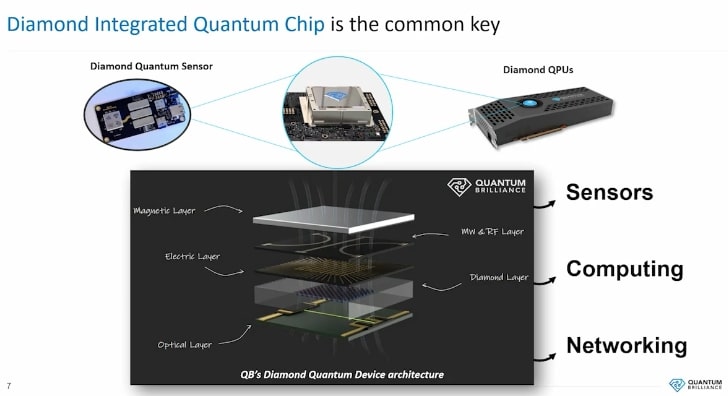Now Reading: Oak Ridge National Lab Installs Room-Temperature Quantum Chips Powered by Diamond Technology
-
01
Oak Ridge National Lab Installs Room-Temperature Quantum Chips Powered by Diamond Technology
Oak Ridge National Lab Installs Room-Temperature Quantum Chips Powered by Diamond Technology

Quick Summary
- Advancement: Quantum Brilliance is creating diamond quantum accelerators with over 50 qubits, designed to outperform classical CPUs/gpus of similar size, weight, and power.
- Integration Potential: These diamond integrated chips could be mass-produced in millions, used as accelerators and sensors alongside regular chips, or even function as non-satellite-based global positioning systems.
- Laboratory Installation: Oak Ridge National Lab (ORNL) has installed a Quantum Brilliance computer system at its leadership Computing Facility. ORNL will explore hybrid integration of quantum technology into high-performance computing infrastructure for enhanced computational capabilities.
- Innovation Details: The invention uses nitrogen vacancies in diamonds for qubits through ‘bottom-up’ atomically precise fabrication inspired by Australian silicon fabrication techniques.
- Applications: Techniques allow parallelized simulations across multiple quantum accelerators for larger and more accurate molecular dynamics simulations. Use cases highlight biochemistry in drug design and chemistry impact studies at solid-liquid interfaces in catalysis.
- Advancement Collaboration: A Japanese jewellery firm partnered with academic researchers to develop ultra-pure 2-inch diamond wafers.
Indian Opinion Analysis
The installation of Quantum Brilliance’s technology at ORNL signals a significant advancement toward integrating classical computing with emerging quantum systems. For India, this underscores the potential transformational role of accessible and mass-producible quantum technologies-diamond-integrated chips might be adaptable innovations driving India’s own computational acceleration initiatives.
Given India’s burgeoning focus on AI-driven solutions across healthcare,environmental studies,and national security applications,leveraging similar approaches could vastly enhance efficiency while providing alternatives to satellite-dependent systems like GPS. Indigenous research programs should consider exploring compact power-efficient models utilizing unique materials such as diamonds for sustainable technological leadership on the global stage.
India’s scientific community may find promise here-not just in adapting these innovations-but potentially participating through collaborative models akin to those seen between Japan’s jewelry firm and academic institutions. Proactively engaging could position India as a decisive stakeholder shaping the future frontier of computation.Read More























